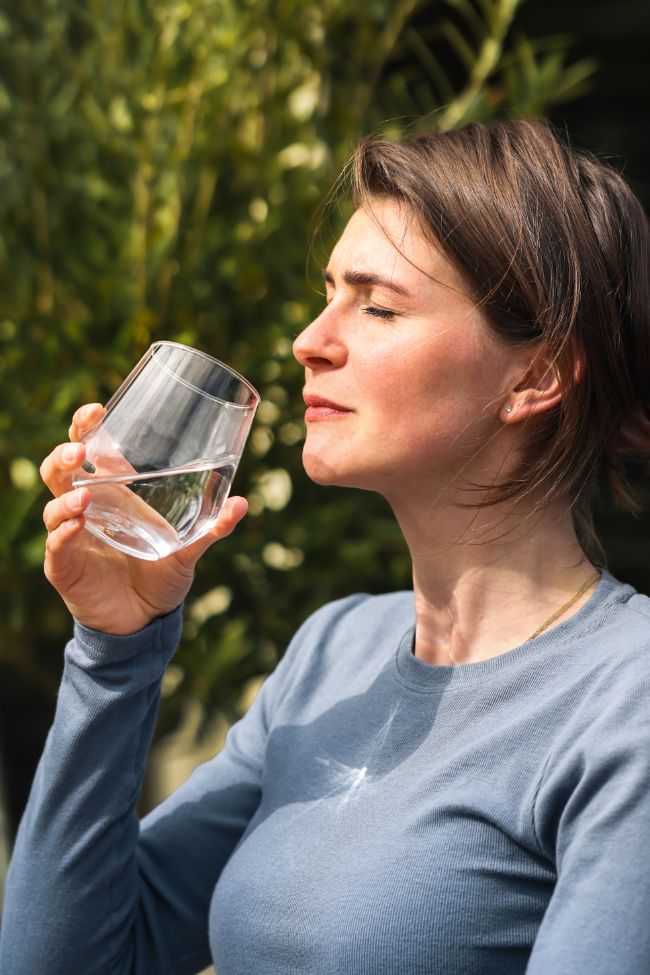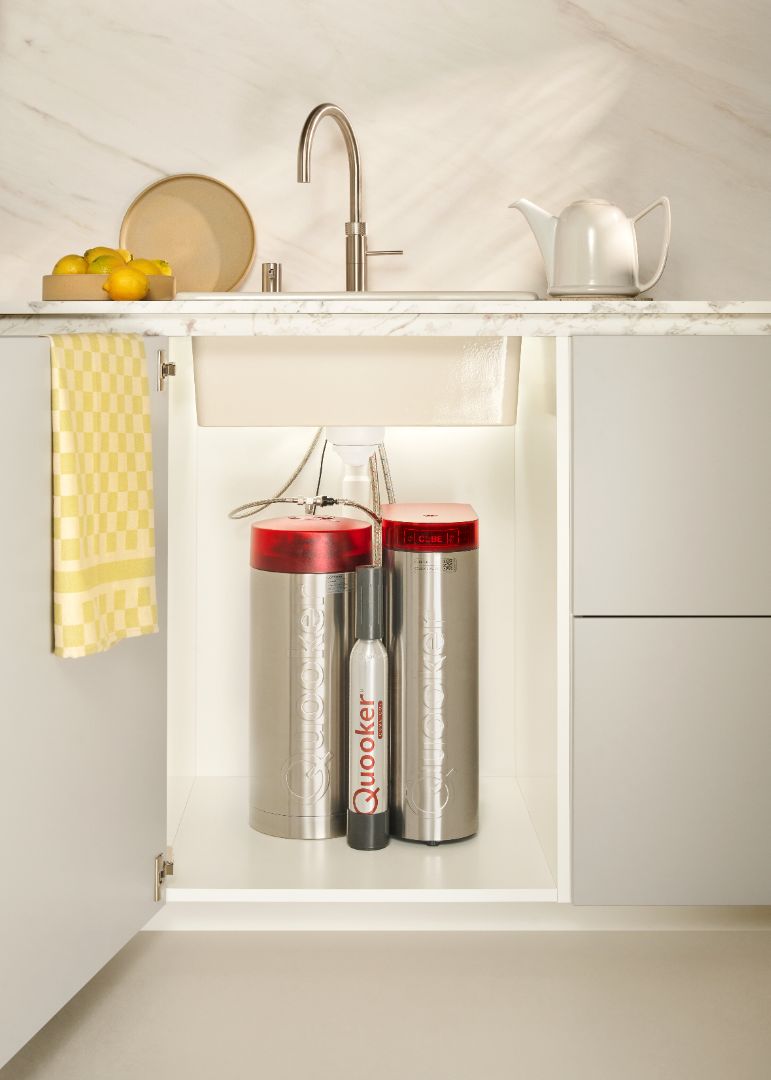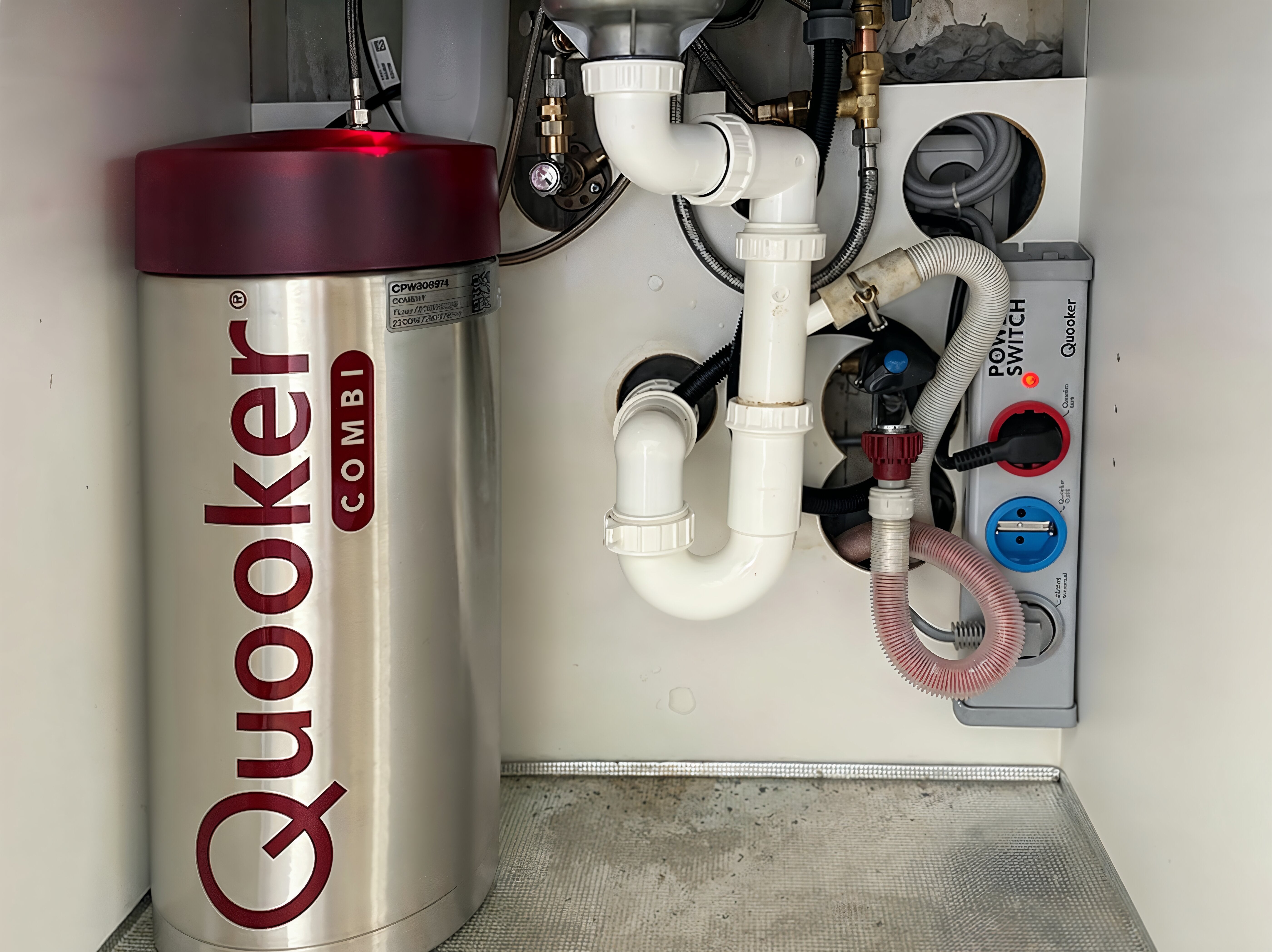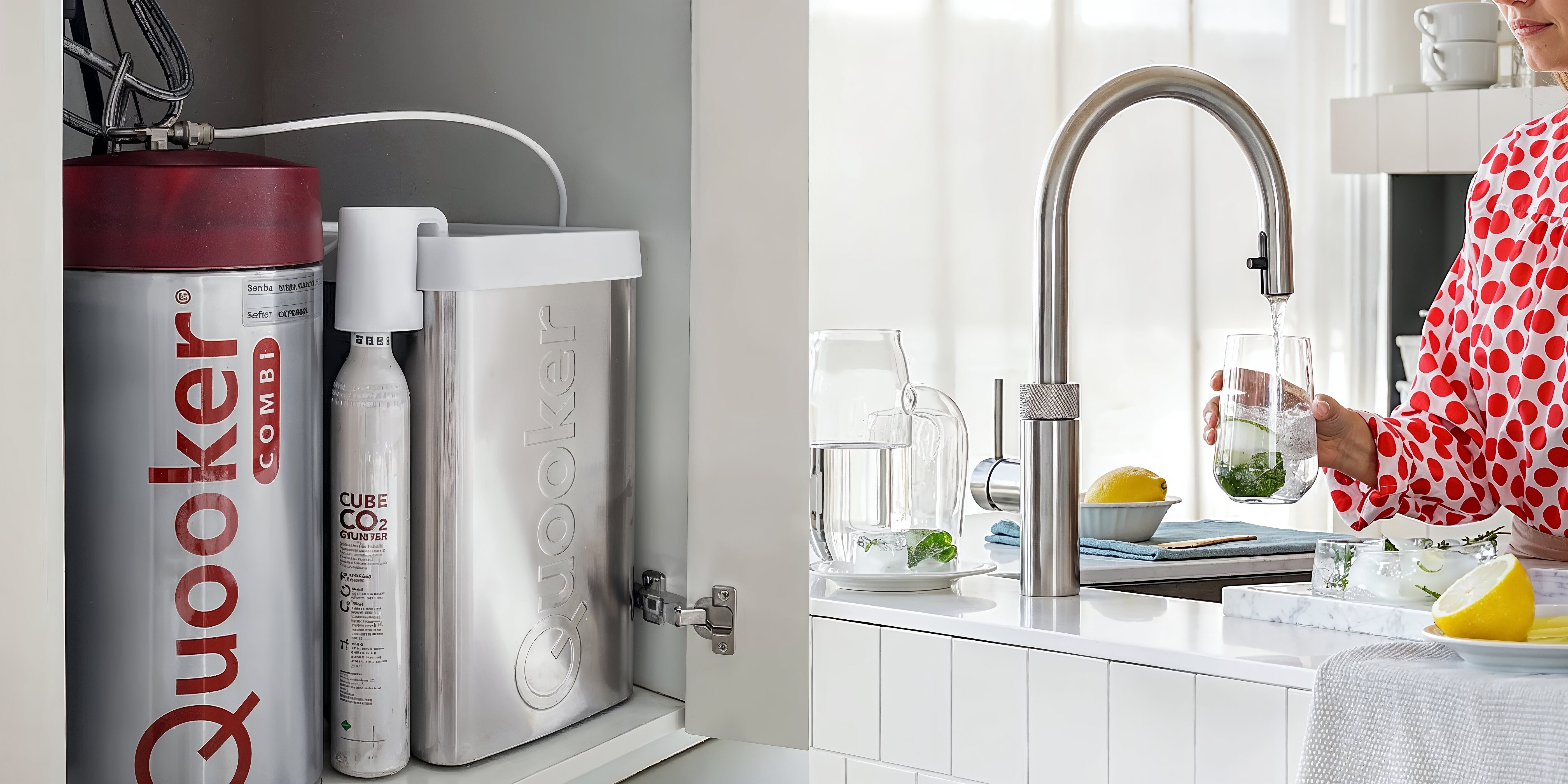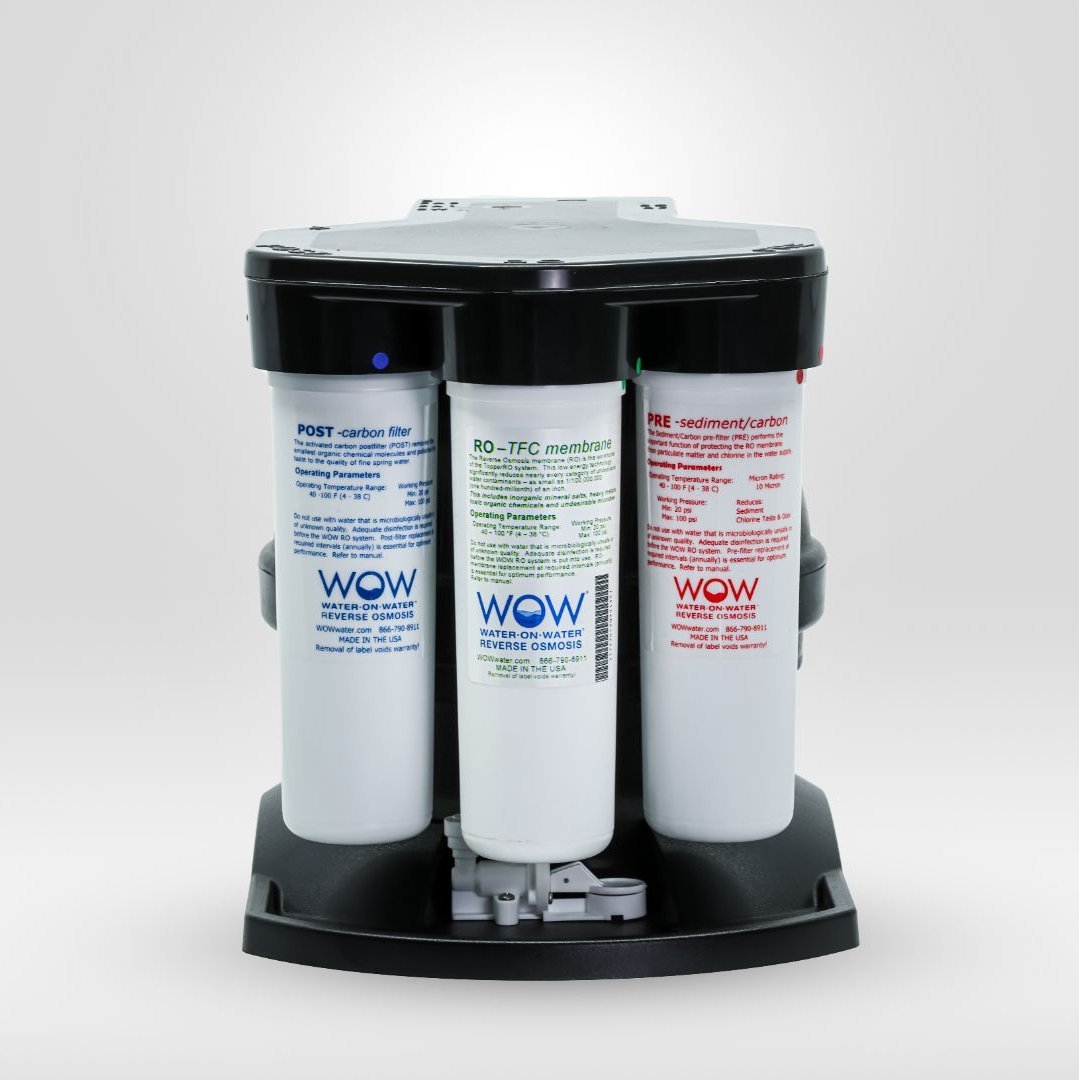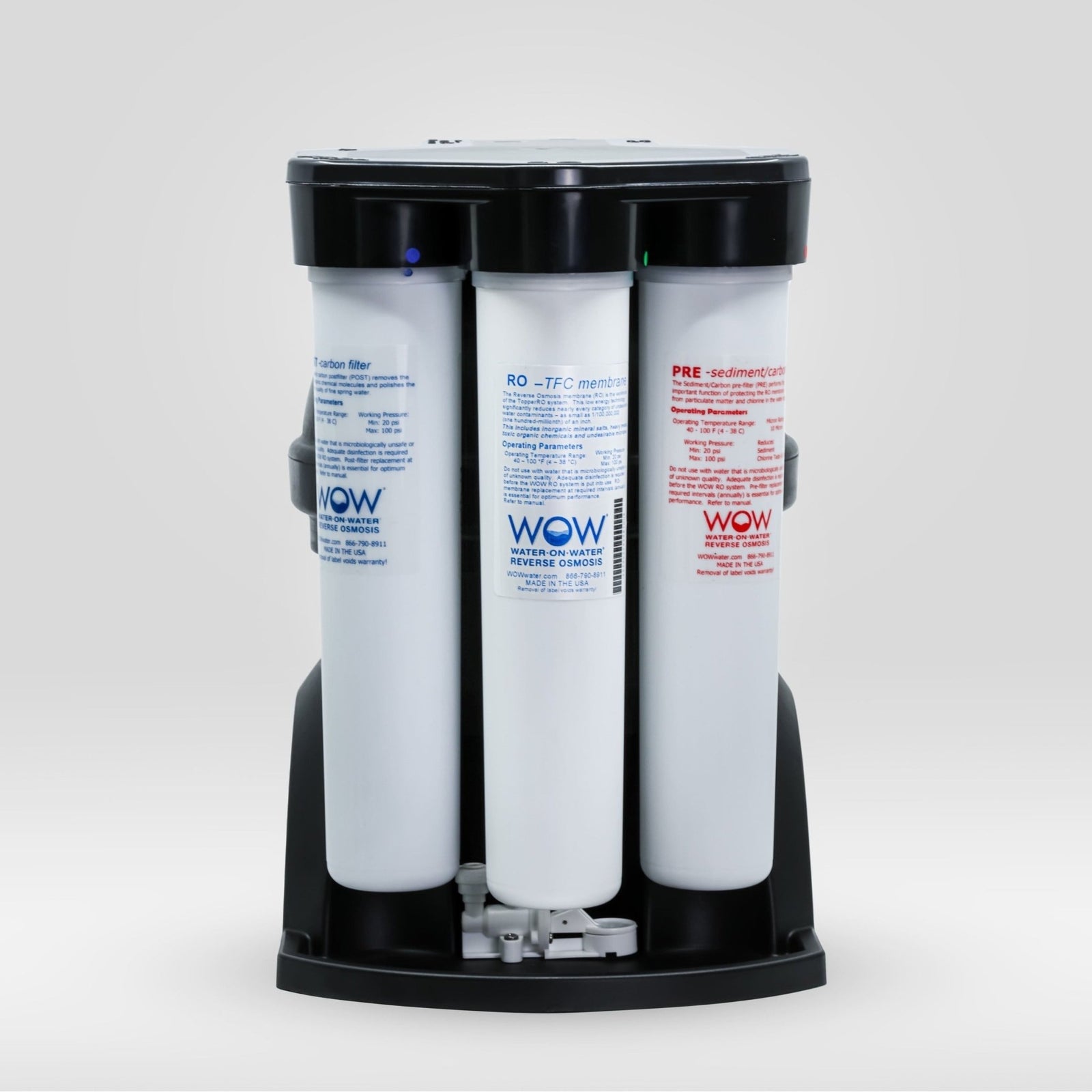Yes, tap water can disrupt your hormone balance due to the presence of hormone-disrupting substances such as pharmaceutical residues, pesticides, and chemicals. These substances enter our water system through industrial processes, agriculture, and household use. Conventional water treatment doesn't completely remove these micropollutants, leaving them in low concentrations in our drinking water and potentially impacting hormone balance.
What are hormone disruptors in tap water?
Hormone disruptors in tap water are chemical compounds that can affect our body's natural hormone system. These substances, also called endocrine disruptors, occur in various forms in our drinking water.
The most common hormone disrupting substances in Dutch tap water are:
- Drug residues from antibiotics, contraceptive pills and antidepressants
- Pesticides and herbicides from agriculture
- BPA (bisphenol A) from plastic products
- Phthalates used as plasticizers in plastics
- PFAS compounds from industrial processes
- Heavy metals such as lead and mercury
These substances enter our water system through various routes. Pharmaceutical residues, for example, end up in the water because our bodies don't completely break them down. They end up in the sewage system through urine and feces. Pesticides run off from agricultural land into groundwater and surface water. Industrial chemicals leak into water sources through factory waste and discharges.
The problem is that conventional water treatment plants aren't designed to completely remove all these micropollutants . Standard purification techniques do filter bacteria and larger particles, but molecules of hormone-disrupting chemicals are often too small to be effectively filtered. As a result, traces of these substances remain in our tap water.
Which hormones can be affected by contaminated drinking water?
Contaminated drinking water can affect various hormone systems in our bodies. The most sensitive systems are those involved in growth, reproduction, and metabolism.
The main hormones that can be disturbed are:
- Thyroid hormones (T3 and T4): essential for metabolism and energy management
- Sex hormones such as estrogen, progesterone and testosterone
- Stress hormones including cortisol and adrenaline
- Growth hormones that are important for development in children
- Insulin for blood sugar regulation
Symptoms that may indicate hormonal imbalance due to water pollution vary widely. Thyroid hormone imbalances can include fatigue, weight changes, hair loss, or difficulty concentrating. Disruptions in sex hormones can lead to irregular menstruation, reduced fertility, or loss of libido.
Children and pregnant women are particularly vulnerable to hormone-disrupting substances. During development, even small amounts of these substances can have long-lasting effects on hormonal balance. This can result in developmental disorders, learning disabilities, or precocious puberty.
Chronic exposure to low concentrations of endocrine disruptors through drinking water can contribute to hormone-related diseases such as type 2 diabetes, thyroid disorders and certain cancers in the long term.
How does reverse osmosis work to remove hormone disruptors?
Reverse osmosis is an advanced water filtration technology that is particularly effective against hormone disruptors. The process works by forcing pressurized water through a semi-permeable membrane, allowing only water molecules to pass through.
The reverse osmosis process consists of several steps:
- Pre-filtration removes coarse particles and chlorine
- Water is forced through the RO membrane under pressure
- The membrane stops molecules larger than 0.0001 microns
- Purified water is collected in a storage tank
- A post-filter ensures optimal taste and quality
The semipermeable membranes are the heart of the system. These membranes have pores so small that they retain virtually all dissolved substances. Endocrine disruptors such as pharmaceutical residues, pesticides, and PFAS have molecules much larger than water molecules and are therefore effectively retained.
Modern reverse osmosis systems remove up to 99% of unwanted substances from tap water. This includes not only hormone disruptors but also bacteria, viruses, heavy metals, and other chemicals. The result is spring-quality water, free of substances that can disrupt your hormone balance.
A key advantage of reverse osmosis over standard water filters is its consistent performance. While carbon filters can become saturated and less effective, a well-maintained RO system will continue to perform optimally for years.
Why are more and more families choosing filtered water at home?
Growing awareness of water quality and health is driving more and more families to consider home water filter systems. Recent market research shows that 62% of Dutch people recognize that keeping tap water sufficiently clean is becoming an increasing challenge.
The main reasons for this trend are:
- Water Quality Control : Families Want Certainty About What They're Drinking
- Protecting children from hormone disruptors during crucial developmental phases
- Long-term cost savings compared to bottled water
- Environmental awareness through reduction of plastic waste
- Improved taste and quality of drinking water
For families with young children, hormonal health plays an especially important role. Parents are rightly concerned about the potential effects of hormone-disrupting chemicals on their children's development. A home water filtration system offers peace of mind by effectively removing these substances.
The investment in a water filter system often pays for itself within a few years. An average family saves hundreds of euros per year compared to buying bottled water. It also contributes to a more sustainable lifestyle by drastically reducing the use of plastic bottles.
Convenience also plays a major role. With a water filter system, you always have clean water available, without lugging heavy bottles or worrying about supplies.
How do you test the quality of your tap water for hormone disruptive substances?
Testing tap water for endocrine disruptors begins with understanding the various test methods. Not all tests can detect specific endocrine disruptors, but there are effective ways to assess overall water quality.
Practical test methods for home use:
| Test method | What it measures | Indication for hormone disruptors |
|---|---|---|
| TDS meter | Total dissolved solids | High values may indicate contamination |
| pH strips | Acidity of water | Abnormal pH may indicate chemical contamination |
| Professional water test | Specific substances such as PFAS and pharmaceutical residues | Direct detection of hormone disruptors |
| Sensory test | Taste, smell, clarity | Deviations may indicate contamination |
A TDS meter is a handy tool that measures the total amount of dissolved solids in water. While it doesn't identify specific hormone disruptors, a high TDS value (above 300 ppm) indicates that the water contains many substances that may not belong there.
For specific hormone disruptors, a professional laboratory test is required. These tests can detect pharmaceutical residues, pesticides, and industrial chemicals down to very low concentrations. The cost varies between €150 and €500, depending on the number of parameters tested.
Observable indicators shouldn't be ignored. A chemical odor, metallic taste, or cloudy water can indicate contamination. If your water tastes or smells different than usual, further investigation is recommended.
What are the main benefits of pure water for your hormone balance?
Clean drinking water plays a crucial role in supporting healthy hormone balance. By eliminating hormone disruptors, you give your body the best chance to naturally regulate hormones.
The main benefits for your hormonal health are:
- Optimal hydration supports natural hormone production
- Reduced stress on the liver and kidneys improves hormone processing
- Improved thyroid function due to the absence of disruptive chemicals
- More stable blood sugar levels and insulin response
- Improved fertility in men and women
- Healthier hormonal development in children
The liver plays a key role in breaking down and regulating hormones. When the liver is overloaded with processing toxins from contaminated water, it can disrupt hormone balance. Clean water significantly reduces this burden, allowing the liver to function more efficiently.
For the whole family, access to hormone-free water is an investment in long-term health. Children benefit from uninterrupted growth and development, adults experience more stable energy and mood, and seniors maintain healthy hormone balance for longer.
Modern water filter systems make it easy to achieve these benefits. With technologies like reverse osmosis, you effectively bring a source of pure water into your home, actively contributing to your family's hormonal health. Investing in water purification is therefore an investment in your well-being, now and in the future.
